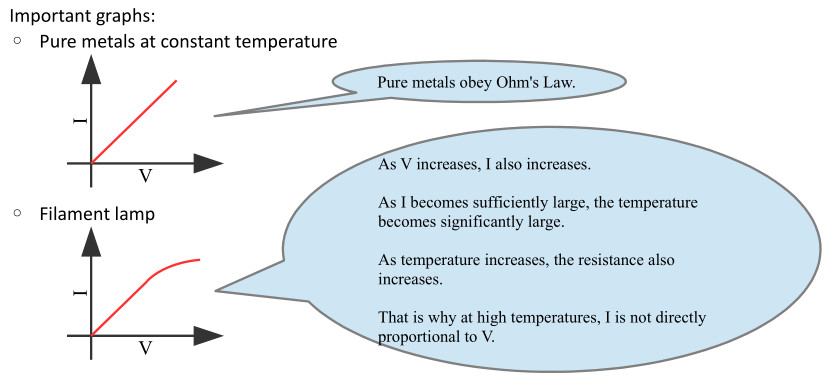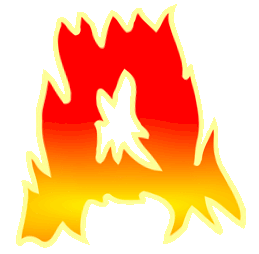-
Current: It is the rate of flow of electric charge.
I = Q / t
-
Unit: A
-
Current is measured using an ammeter or galvanometer.
-
-
A short-circuit happens when load (resistance) is bypassed and excess current flows due to lack of resistance.
-
A short-circuit may cause heating and start a fire.
-
-
Electromotive force (e.m.f.) of a source: It is the energy converted by a source from non-electrical form to electrical form in driving a unit charge round a complete circuit.
e.m.f. = E / Q
-
Potential difference between two points: It is the energy converted from electrical to other forms when a unit charge passes between the two points.
V = E / Q
-
A comparison between e.m.f. and potential difference:
-
Similarities
-
Both involve energy and charge
-
Both are measured in volts.
-
Both are measured by voltmeter.
-
-
Differences
-
In e.m.f. the energy change is from non-electrical to electrical. In p.d. the energy change is from electrical to non-electrical.
-
e.m.f. is property of source. p.d. is property of part of circuit.
-
-
-
Volt: The potential difference between two points in a conductor is one volt if one joule of energy is converted from electrical to other forms when one coulomb of positive charge flows through it.
-
A voltmeter is connected in parallel.
-
Voltmeters have a high resistance.
-
-
An ammeter is connected in series.
-
Ammeters have a low resistance.
-
-
Resistance: It is the ratio of potential difference across a material to the current flowing in it.
R = V / I
-
Unit: Ω
-
-
Resistors are used in circuits to limit the flow of current. Their types are:
-
Fixed resistors
-
Variable resistors (rheostats)
-
-
Ohm’s Law: It states that current is directly proportional to potential difference provided that temperature does not change.
V ∝ I
-
Limitations: Ohm’s Law is applicable to
-
Pure metals
- at constant temperature
-
-

- Resistance and resistivity
- The constant called resistivity is denoted by ρ.
- Every material has its own value of resistivity.
- Resistivity can be used to tell good conductors from bad.
- It is better to say that copper has low resistivity than to say copper has low resistance.
Go back to table of contents



